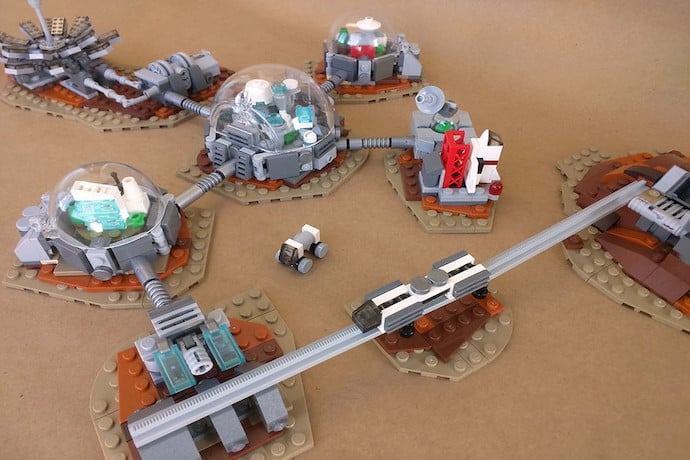For anyone who has read the novel, The Martian, the fact that settling Mars poses some serious problems would be an understatement. In the novel, Mark Watney, a botanist back on earth, encounters calamity after calamity as a crew member of a mission to the red planet. However, each time the protagonist faces a seemingly insurmountable setback, he succeeds by following his core philosophy in the book – “work the problem”.
This focus on problem-solving as a process (or even an art) is one of the skills that I believe students of all ages could benefit from. Learning how to work problems through decomposition, pattern recognition, or even just gaining a fresh perspective are skills that can prove to be invaluable to students. That’s why this year in our 6th grade, along with my English, Math, and Science colleagues, we are planning a mission to Mars.
One of the reasons I liked this idea upon first hearing it is that creating a settlement on Mars is really fraught with big, thorny problems. The YouTube channel Kurzgesagt in their video “Building a Marsbase is a horrible idea: Let’s do it!” does a really good job of outlining all the problems facing future mission designers.
The red planet has almost no atmosphere and would require pressurized buildings and space suits. It is also plagued by raging dust storms, and its dust is so fine that breathing it or letting it into buildings would be disastrous. On top of that, the lack of an atmosphere means that the planet is bombarded by radiation and any settlements would have to be shielded considerably from the sun.
While these facts are clearly very limiting at first glance, staying positive and using problem solving skills to work the problem will be the goal of our unit. In my class, I am asking students to use their 3D design skills to design and print the structures that will house our settlers. This idea is not as far-fetched as it seems. In 2019, NASA awarded $500,000 to the architecture firm AI SpaceFactory for their design of a conical Mars habitat 3D-printed from materials available on the red planet. Using a concrete made up of Martian soil, 3D printed designs could be the solution that could make the idea of a Marsbase much more possible.
Students will have to contend with the limiting factors of designing pressurized structures that contain robust air locks. Due to the constant barrage of radiation, they will also need to consider how to shield the settlement from the sun. Moreover, they will have to consider the mental health and well being of settlers who will be struggling with the effects of low gravity millions of miles away from home. All of these factors put some very challenging constraints on the students, but none of these problems are insurmountable.
When problem-solving is framed as a process, it gives students a pathway forward when they may feel stuck or out of ideas. Always first and foremost in this process is defining and decomposing the problem. By looking at the problem and decomposing it (teasing out smaller and more manageable problems from larger ones), they can find a place to start. In one assignment in our unit, students decompose the habitat problem down to just the issue of airlocks and dust. Using small doorways or foyers around the school, they can test their theories and possible solutions. From there they can iterate through the process and redesign as necessary until they find the solution they are looking for.
Teaching students the cognitive skills necessary to tackle tough problems is important with any age group, but it is especially pertinent to adolescents. Our hope is that using a Mars mission as a model, students will find similar agency with other problems they face. From algebra to the five-paragraph essay, students routinely face out-sized academic problems. Teaching them how to approach these moments with a clear and level-headed process makes them stronger academically and teaches them how to work independently. With any luck, maybe one day they will find themselves applying these methods in a space-related career such as Astrophysics, Engineering, or Artificial Intelligence.
Learn More
Decomposition in problem-solving
https://www.bbc.co.uk/bitesize/topics/zkcqn39/articles/z8ngr82
Decomposition in Computational thinking
https://equip.learning.com/decomposition-computational-thinking/
Decomposing math center activities
https://www.akteacherlife.com/decomposing-math-center-activities/
Pattern Recognition in Computational Thinking
https://equip.learning.com/pattern-recognition-computational-thinking/
Pattern Recognition: a key skill for computational thinking
Building a Mars Base
https://www.youtube.com/watch?v=uqKGREZs6-w
Mars Habitat
https://en.wikipedia.org/wiki/Mars_habitat
How to Build a Mars Base
https://www.digitaltrends.com/features/how-to-build-a-mars-base-habitat/
How to build on Mars
https://constructible.trimble.com/construction-industry/spacex-to-mars-city-how-to-build-on-mars

